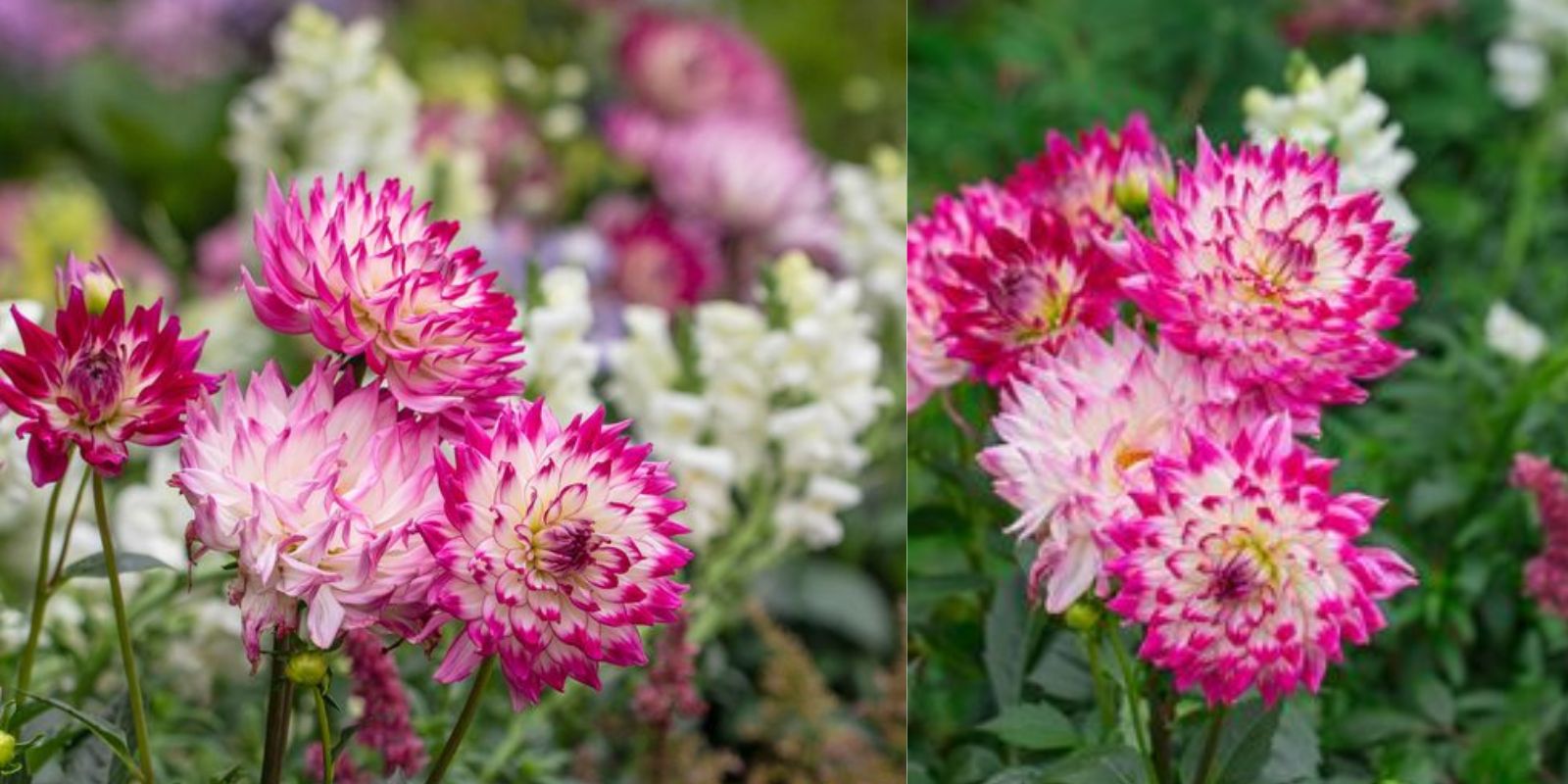Introduction
Dahlias (Dahlia pinnata) are among the most captivating and versatile flowers you can grow in your garden. Known for their vibrant colors, diverse flower forms, and impressive size range, Dahlias have captured the hearts of gardeners and flower enthusiasts worldwide. Whether you’re planning a garden bed bursting with blooms or seeking a standout addition to your floral arrangements, understanding how to cultivate Dahlias will ensure a rewarding gardening experience.
Discovering Dahlia Varieties
Dahlias come in a staggering array of varieties, offering an endless palette of colors and forms. From small, delicate pompons to large, dinner plate-sized blooms, there’s a Dahlia to suit every preference and garden style.
- Flower Forms: Dahlias exhibit various flower forms, including single-flowered, cactus, ball, pompon, and decorative types. Each form adds its unique charm and texture to garden landscapes and floral displays.
- Color Spectrum: Embrace a spectrum of colors with Dahlias, from rich reds and oranges to soft pastels and striking bicolor combinations. Whether you prefer monochromatic themes or vibrant contrasts, Dahlias offer endless possibilities for creative garden design.
Cultivating Dahlias: Essential Steps
Successfully growing Dahlias involves understanding their specific requirements for soil, sunlight, water, and care. Follow these essential steps to cultivate healthy Dahlias and encourage abundant blooms throughout the growing season.
- Choosing and Preparing the Site:
- Sunlight: Plant Dahlias in a location that receives full sun (at least 6-8 hours of direct sunlight daily). While they can tolerate partial shade, full sun promotes robust growth and prolific flowering.
- Soil: Dahlias thrive in well-draining, fertile soil with a pH level around 6.5-7.0. Incorporate organic matter such as compost or aged manure into the soil before planting to improve fertility and drainage.
- Planting Dahlias:
- Timing: In most regions, Dahlias are planted after the last frost date when soil temperatures have warmed. In cooler climates, start tubers indoors a few weeks before transplanting outdoors.
- Depth and Spacing: Plant Dahlia tubers (or plants from nursery pots) with the crown just below the soil surface, spaced 1.5 to 2 feet apart to allow for adequate air circulation and growth.
- Watering and Feeding:
- Watering: Keep the soil evenly moist but not waterlogged throughout the growing season. Dahlias benefit from deep watering once or twice a week, especially during dry periods.
- Fertilizing: Apply a balanced fertilizer (such as 10-10-10 or similar) at planting time and then monthly during the growing season. Avoid high-nitrogen fertilizers that promote foliage growth over flower production.
- Support and Maintenance:
- Staking: Tall Dahlias and those with large blooms may require staking to support their stems and prevent them from bending or breaking under the weight of flowers.
- Deadheading: Regularly remove spent flowers to encourage continuous blooming and divert the plant’s energy into producing new blooms rather than seed development.
Enjoying Dahlias: From Garden to Vase
Dahlias not only beautify garden landscapes but also make exquisite cut flowers for floral arrangements and bouquets. Harvesting Dahlias at the right stage ensures long-lasting blooms that bring joy indoors.
- Harvesting Blooms: Cut Dahlias early in the morning or late in the evening when temperatures are cooler. Use sharp scissors to make a clean, angled cut just above a leaf node to encourage new growth.
- Arranging Flowers: Arrange Dahlias in a vase filled with clean water mixed with floral preservative. Remove foliage that will be below the waterline to prevent bacterial growth and change the water every few days to prolong vase life.
Overwintering Dahlias
In regions with cold winters, Dahlias are typically treated as tender perennials or annuals. Protect tubers from frost damage by lifting them from the ground before the first frost and storing them indoors.
- Lifting Tubers: After the first frost, carefully dig up Dahlia tubers, taking care not to damage them. Shake off excess soil and allow tubers to dry in a cool, dry location for several days.
- Storage: Store dry tubers in a box or paper bag filled with peat moss, vermiculite, or sawdust. Keep them in a cool (40-50°F or 4-10°C), dark place until it’s time to replant them in the spring.
Dahlia Care Tips for Success
- Pest and Disease Management: Monitor Dahlias for common pests such as aphids, spider mites, and earwigs. Treat infestations promptly with insecticidal soap or neem oil.
- Mulching: Apply a layer of mulch around Dahlias to conserve soil moisture, suppress weeds, and maintain even soil temperatures.
Conclusion
Cultivating Dahlias offers gardeners a rewarding journey filled with vibrant colors, diverse forms, and the satisfaction of nurturing stunning blooms from tuber to vase. Whether you’re a seasoned gardener or a novice enthusiast, Dahlias provide endless opportunities for creative expression and garden beauty. Embrace the art of growing Dahlias in your garden and enjoy the splendor they bring throughout the seasons.
By following these comprehensive guidelines, you can cultivate Dahlias successfully and revel in their unparalleled beauty, enhancing your outdoor spaces and bringing joy with each magnificent bloom.
This article provides a detailed overview to help you successfully grow Dahlias and enjoy their beauty in your garden.

